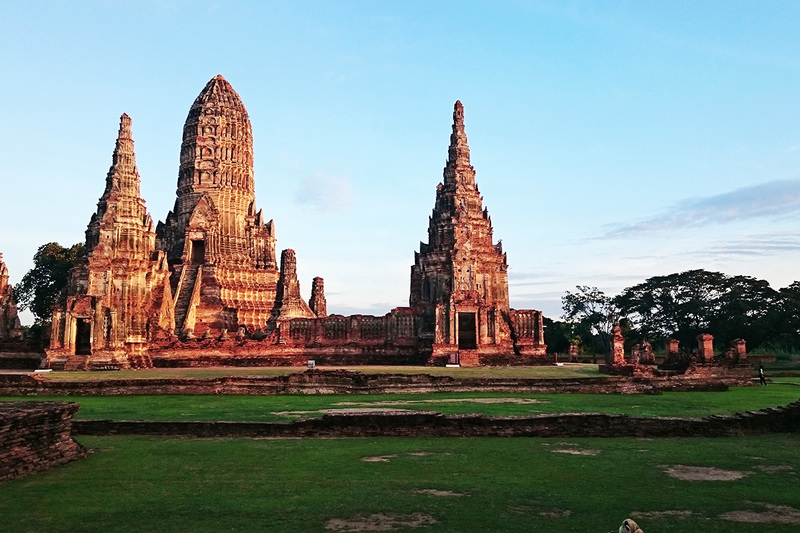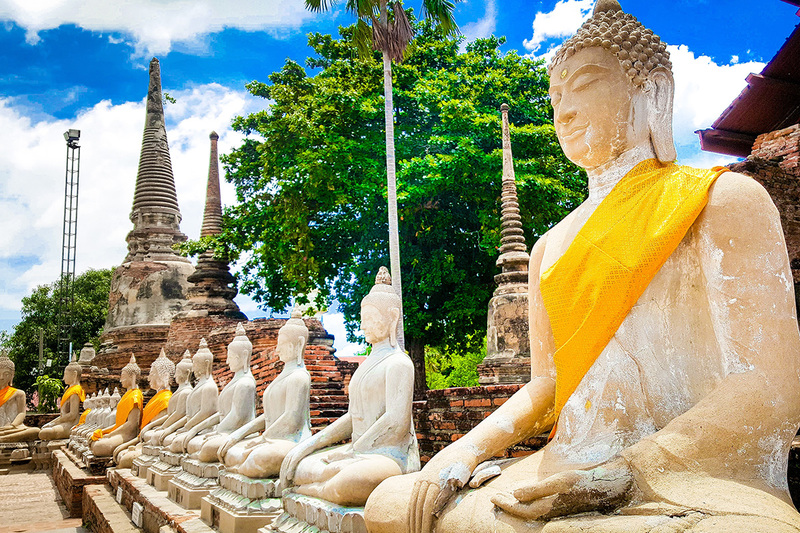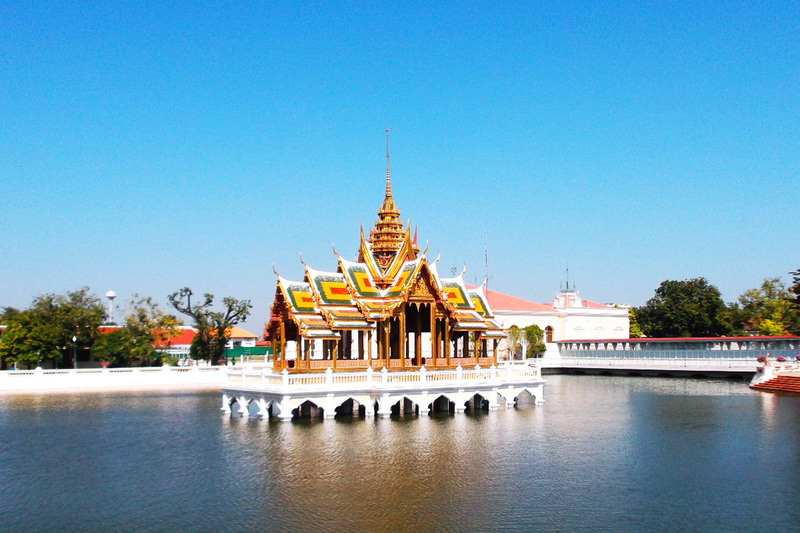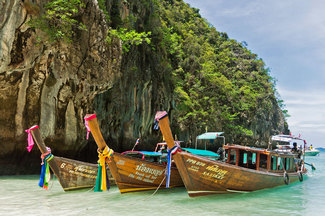AYUTTHAYA – THAILAND’S GOLDEN KINGDOM

Ayutthaya, takes its name from Rama’s legendary kingdom, featured in the Thai national epic, the Ramakien. This former vassal state of the Khmer Empire, situated at the confluence of the Chao Phraya, Pasak and Lopburi rivers, surrounded by fertile plains for rice farming and only a relatively short distance from the sea, rose to become one of the largest cities in the world, a thriving trade emporium, that welcomed merchants from all over Asia and from the sixteenth century on European traders, mercenaries and adventurers.

Chedi and Prang, Ayutthaya
The cosmopolitan flavour of this glittering capital is reflected in the food of Thailand, which has become on the world’s most popular and healthy cuisines, incorporating many foreign influences and melding them into a distinctly Thai gastronomic experience.
The kingdom’s origins date to about the year 1350 when Ramathibodi I, assumed the title of King of Dvaravati Sri Ayodhya. His reign saw Ayutthaya rise to dominate the Central Plains, incorporating Thailand’s former shining star, the Kingdom of Sukhothai, under his rule. A succession of absolute monarchs expanded the kingdom’s borders at the expense of its neighbours Chinag mai and the Khmer Empire, whose influence on Thai court language, etiquette and tradition was profound.

Buddha statues at Ayutthaya Historical Park
The concept of the devajaja, the god king, of the formerly Hindu Khmer tradition was tempered by Theravada Buddhism, wherein the king was considered not divine as such but rather the supreme head of the religion and its protector. Khmer court rituals and language were incorporated into the Thai court ceremonies where both Buddhist and Brahmans officiated.
The dominance of Ayutthaya brought about the demise of the once mighty Angkorian Empire, when after repeated attacks, the final blow fell in 1431 as Thai forces entered the city and ransacked it, taking back to Ayutthaya treasure and tens of thousands of captives, many of whom were highly skilled artisans and scholars. Angkor was subsequently abandoned by the Khmer court who fled to Phnom Penh.

Thais on elephants preparing for a war
As the kingdom grew in size and prestige its fame and wealth attracted merchants from China, Vietnam, Japan, Burma, India, Persia, Java, Malaya and by the sixteenth century Portuguese and Spanish merchant adventurers had appeared on the scene soon to be followed by their European rivals from Holland, England and France. All these competing nationalities were given ‘quarters’ outside of the walled city in which to live and conduct their trade.
All this wealth and prestige aroused the ire of the Thai kingdom’s neighbour to the west, the kingdom of Burma, which launched a series of campaigns to conquer Ayutthaya, beginning in 1549 and culminating in 1767 in the complete destruction of the capital, after a siege lasting over a year, which brought to an end four centuries of this glorious cosmopolitan metropolis and its ruling dynasty, with tens of thousands of Thai prisoners and plunder taken back to Burma, leaving Ayutthaya a smoking ruin.

Wat Chaiwatthanaram, backside
Today the ruins of Ayutthaya, an easy day-trip from Bangkok, still manage to convey something of the majesty and power of this once mighty city and the kingdom it ruled. In the city centre, the Ayutthaya Historical Park, now a UNESCO World Heritage Site, spectacular temples and ruins of royal palaces nestled among and sheltered by a canopy of majestic trees offer a glimpse of the magnificence and opulence of this once powerful Kingdom that brought Thailand to international recognition.

Lake at Bang Pa-In royal palace, Ayutthaya
As you stroll leisurely around this beautifully maintained historical site you cannot but wonder at the style and ingenuity of its architects, artisans and craftsmen, the magnificence of its religious and royal buildings, and the culture that made it all possible. From its inception to its golden age and its cataclysmic death throes the story of Ayutthaya is a roller coaster of heady highs and crushing lows, but it lives on in the minds of Thais today as potent reminder of what was once the glory of its age.










of collaborative energy




Before proceeding to use the website please carefully ready our Terms and Policies
I accept Diwerent's Terms and Conditions and Privacy Policy













